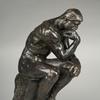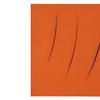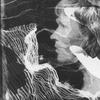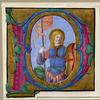Pop for the People: Roy Lichtenstein in L.A.
- LOS ANGELES, California
- /
- January 31, 2017
Retrospective of vanguard American artist Roy Lichtenstein explores social impact of Pop Art
Display of rarely seen works and photographs underscores the artist at work in Los Angeles for more than twenty-five years
Renowned for his representations of everyday objects and his inventive interplay of line, dot, and color, Roy Lichtenstein (1923–1997) shaped the Pop Art movement. Organized by the Skirball Cultural Center, Pop for the People: Roy Lichtenstein in L.A. explores how the artist and the movement—buoyed by a renaissance in printmaking in Los Angeles—made fine art accessible to the American public in ways that had not been achieved before. By exploring the historical and cultural context of Lichtenstein’s life and work, the exhibition sheds light on the social impact of Pop Art, especially as it developed in Los Angeles.
On view at the Skirball, in Los Angeles, through March 12, 2017, Pop for the People displays more than seventy Lichtenstein works spanning four decades. On view is the seminal and rarely exhibited Ten Dollar Bill (1956), one of Lichtenstein’s very first Pop Art pieces; as well as the iconic Sunrise (1965) and Shipboard Girl (1965), which he made when he was first gaining renown. A number of Lichtenstein’s famed comic book works, such as Whaam! (1963) and As I Opened Fire (1964), are mounted alongside the actual comic books from which he appropriated and whose popular imagery he elevated to the realm of high art. By drawing inspiration from comic books as well as from advertising and children’s books, Lichtenstein invited viewers to recognize the world around them in his art.
In the early 1960s, fine art printmaking was on the verge of a technical and popular renaissance, and the locus of print experimentation shifted from France to America. The initial focus of this print revival was on lithography, and many master printers received training at the Tamarind Lithography Workshop in Los Angeles, effectively making the city the epicenter of the movement. The prominent Los Angeles printing house Gemini G.E.L., which celebrates its fiftieth anniversary this year, was born out of this printmaking community.
Over more than twenty-five years, Lichtenstein had a long and fruitful collaboration with the printing house, and Pop for the People features more than twenty Lichtenstein prints that resulted from it. These include examples from Lichtenstein’s Haystack (1969), Bull Profile (1973), and Surrealist (1977) series—in which he reconsiders the work of Claude Monet, Pablo Picasso, and Salvador Dalí, respectively—as well as from his Interior (1991) series. Through these works, the exhibition highlights Lichtenstein’s longtime working relationship with Gemini cofounders Stanley Grinstein and Sidney Felsen, illustrating how they developed a new aesthetic, printed in new mediums, and began to produce and sell the works at a range of price points. This invited patronage by established collectors as well as everyday Americans, and helped to break down the aesthetic and economic barriers between the fine art world and the general public. In addition to the Gemini prints on view, several rarely or never-before-seen photographs show Lichtenstein at work in the Gemini studios and around Los Angeles with family, fellow artists, and his New York gallerist, Leo Castelli.
Pop for the People includes work, on loan from the National Portrait Gallery, in which Lichtenstein responded to major national news—namely the portrait Bobby Kennedy (1968) and the provocative Gun in America (1968). The former was commissioned by Time magazine while Kennedy was on the presidential campaign trail, and the latter after the candidate was gunned down in Los Angeles. Both graced the cover of Time, publicizing Lichtenstein’s signature graphic style to a very wide readership and sparking a conversation about gun control that continues to this day.
Additional works demonstrate the depth and breadth of Lichtenstein’s oeuvre, from rare prints to paper plates, clothing, and even turkey shopping bags. The exhibition shows how Lichtenstein’s aesthetic persists even today—in advertising, fashion, and merchandising.
Finally, visitors will be able to walk through a three-dimensional reimagination of Lichtenstein’s 1992 painting Bedroom at Arles, based on a series by the same name by Vincent van Gogh. The installation urges visitors to not just look at the art, but to inhabit it, reinforcing the “what’s mine is yours” ethos of the Pop Art movement.
















